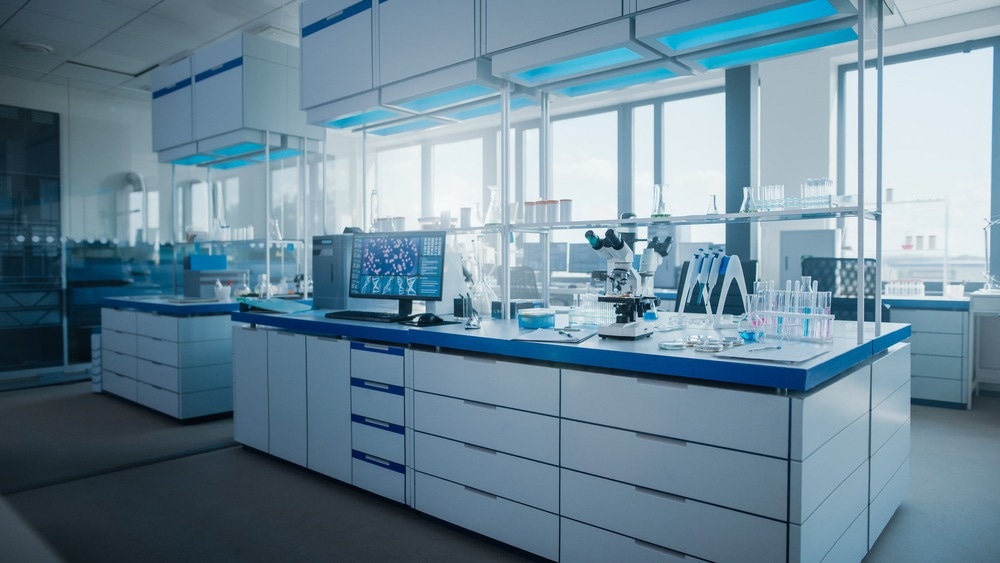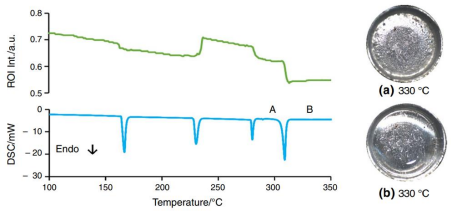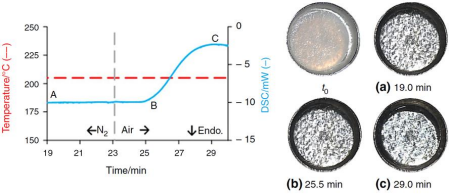Researchers at the University of Huddersfield have combined differential scanning calorimetry (DSC) with thermomicroscopy to reveal detailed energy changes in specific materials.

Image Credit: Gorodenkoff/Shutterstock.com
In this first-ever study that uses DSC-thermomicroscopy to harness the benefits of analyzing rubidium nitrate and polyethylene oxidation using both methods simultaneously, researchers at the University of Huddersfield’s Thermal Methods Research Unit (TMRU) used the Optical
DSC450 System from Linkam Scientific Instruments to obtain detailed information on the properties of a broad range of materials, including industrial polymers and pharmaceuticals.
Polymers play a critical role in saving energy and resources in applications such as healthcare, pharmaceuticals, and packaging materials production, and current research has a strong focus on their potential to support renewable energy technologies. As the pharmaceutical industry comes under increased pressure to bring new drugs to market quickly and cost-effectively, managing a successful launch program is growing in difficulty, and the industry must continue to find new ways to optimize the drug discovery and development process.
Thermal analysis methods such as thermomicroscopy allow researchers to closely observe optical and physical transitions as a material progresses through a reaction or phase change, ultimately enabling the optimization of the materials in their end-use. Coupling thermomicroscopy with DSC adds the possibility of measuring energy changes during the reaction simultaneously, on the same sample.
The research at TMRU used a Linkam heat flux DSC plate incorporated into a hot stage, combined with a T96 temperature controller to study phase transitions in rubidium nitrate and polyethylene oxidation over a -150 to 450°C temperature range. The results demonstrated the benefits of obtaining simultaneous optical data – both images and light intensity measurements – with DSC, enabling the detection of small changes in enthalpy.

Figure 1: Analysis of rubidium nitrate using the DSC450 (Linkam Scientific). Differential scanning calorimetry (DSC) (lower) and region of interest (ROI) intensity (upper) profiles are plotted as a function of temperature. Selected micrographs (labelled a, b) link to the DSC and ROI profiles. Reproduced from reference 1 in accordance with Creative Commons Attribution 4.0 Licence http://creativecommons.org/licenses/by/4.0/.

Figure 2: Oxidative induction test being performed on a sample of ultrahigh molecular weight polyethylene (UHMWPE). The DSC profile (blue solid line) and temperature programme (red dashed line) have been plotted as a function of time. The vertical line indicates when the gas is switched from N2 to air. Selected micrographs (labelled t0 and a–c) link to the DSC profile. Reproduced from reference 1 in accordance with Creative Commons Attribution 4.0 Licence. http://creativecommons.org/licenses/by/4.0/.
Duncan Stacey, Sales and Marketing Director, Linkam Scientific Instruments commented: “We are just at the start of discovering the potential of DSC combined with thermomicroscopy. Recent developments in high-quality digital microscopes and improved computing power open up the new and exciting potential for the in-depth study, via this method,
of materials that are used in our everyday lives. By observing phase changes such as solid solid transitions, fusion reactions, and decomposition, we can discover new ways to improve the performance and energy profile of materials in application.”
Dr. Gareth Parkes, Reader in Forensic and Analytical Chemistry at TMRU added: “Understanding the way materials behave under different conditions and at carefully controlled temperatures helps optimize their use in different applications. The simultaneous thermal analysis sheds new light on the complex thermal processes of certain materials because the optical image helps interpret often complex DSC profiles through the ability to obtain optical and enthalpic information on a single sample.iv
“The Linkam DSC450’s precise temperature control, especially at low temperatures, has proven an excellent tool in our research. We are now moving forward to investigate whether the DSC450 can support the study of a material’s thermal conductivity by optical means, which opens up exciting new research potential.”